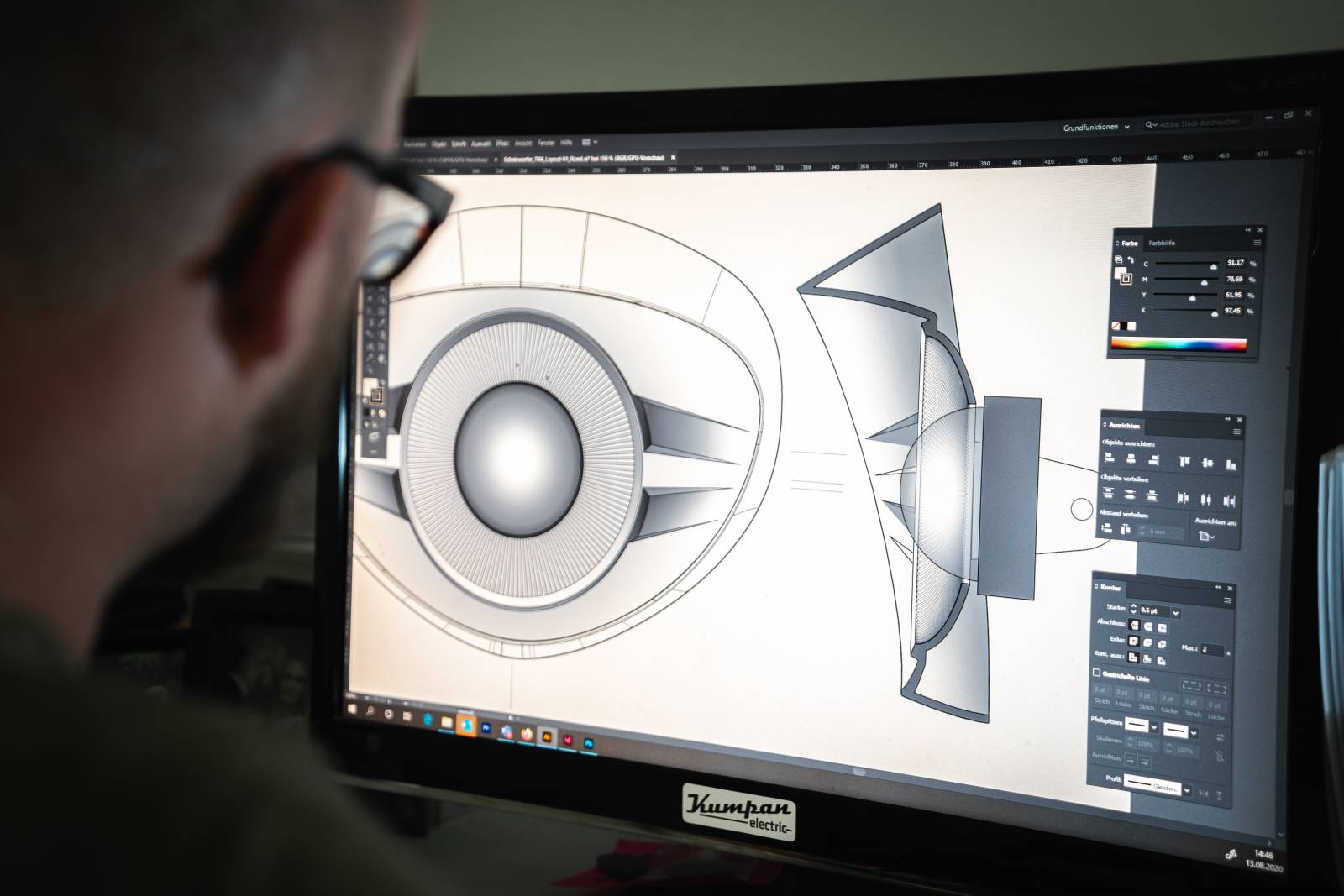Design through inclusion
Inclusion vs. integration
It’s time we understood how societal and technological developments (can) change the view of diversity.
However, the two are different concepts, the following distinction between which is of greater importance: The inclusive approach aims to let „the others“ become part of the given system by adapting to the respective circumstances, the social rules of which are determined by a majority-oriented group. In the inclusive approach, on the other hand, „the others“ are no longer present, since all individuals are seen as part of the whole and society can therefore be shaped on an equal footing.
Designers who are involved in the (re)design of institutions in this way can, for example, contribute as strategic designers or service designers to improving the processes there. Or, as communication designers, they can work on making the communicability of these processes internally and externally transparent, understandable or even more efficient. Here, inclusion could be advanced with the help of design knowledge and design-based development and implementation methods, in that design helps precisely those institutions that are commissioned or involved with inclusion.
Design for inclusion. Here, design can be a provider and designer of tools, objects, information, objects, platforms, networks, systems, in short: of things that are helpful and useful for inclusion, e.g. in relation to everyday practical applications. This is particularly about artefacts, products, end devices that can be helpful as „tools for empowerment“ to enable people or communities. Because design for inclusion aims to enable and facilitate access, to break down barriers, to involve more people in social processes, to make it easier for them to access information and participate in decision-making processes, and to initiate collaboration and networking opportunities. The possibilities and developments of digital technology promise a whole range of new forms of inclusion. This does not mean that design for inclusion is limited to the use and development of such digital technologies. Tools for participation also take effect in „analogue“ areas and are carried out across the entire spectrum of design disciplines – be it in the field of product design, service design, with a focus on community building, or in a provocative form of design as critical design.
Design for inclusion. Here, design can be a provider and designer of tools, objects, information, objects, platforms, networks, systems, in short: of things that are helpful and useful for inclusion, e.g. in relation to everyday practical applications. This is particularly about artefacts, products, end devices that can be helpful as „tools for empowerment“ to enable people or communities. Because design for inclusion aims to enable and facilitate access, to break down barriers, to involve more people in social processes, to make it easier for them to access information and participate in decision-making processes, and to initiate collaboration and networking opportunities. The possibilities and developments of digital technology promise a whole range of new forms of inclusion. This does not mean that design for inclusion is limited to the use and development of such digital technologies. Tools for participation also take effect in „analogue“ areas and are carried out across the entire spectrum of design disciplines – be it in the field of product design, service design, with a focus on community building, or in a provocative form of design as critical design.
By creating and providing tools for participation, design for inclusion can also be a driver of the design of inclusion described above. Moreover, it can also inspire the position of design through inclusion described next. This is especially true when design not only provides things, but also creates a framework for people, groups and communities to work on their own solutions that go beyond direct intervention by designers. In other words, a kind of help for self-help. Such systems of empowerment can exist, for example, in the form of digital or analogue platforms, through the involvement of social workers, by means of hybrid forms of knowledge exchange, personal networks or the like.
Design through inclusion, refers to the processual, i.e. the aspect of inclusion in the design process itself. Examples of this are, in particular, participatory or co-design processes. The principle of equal, non-exploitative participation of non-designers in the design process could ideally be seen as a prerequisite or as an expression of a basic attitude that sees people in a society as equals and is based on a basic democratic understanding of equality and justice.
Design through inclusion can, if successful, inform and inspire each of the other two positions: the design of inclusion as well as the design for inclusion. At these different levels, design can contribute to asking critical questions about existing (power) relations, highlighting possible alternatives and thus stimulating or moderating discourses.
The principle intertwining of design and inclusion elaborated here illustrates the tendency of design to be inclusive (and equally exclusive). As described, a principle of inclusion encompasses the entire diversity scale of all forms of life and areas of society (e.g. aspects such as origin, ethnicity, age, gender, sexual orientation, faith, education). From a design perspective, it can thus target, for example, people who are not considered in a certain space of action of technology use and thus run the risk of being further socially excluded. On the other hand, it offers the technological potential of including the excluded, for example through the targeted dismantling of barriers to access and use. Technology and its design itself are thus characterised by an ambiguity which, on the one hand, contains a field of tension of power and dependence, and on the other hand, a potential for inclusion for the supposedly underprivileged.







